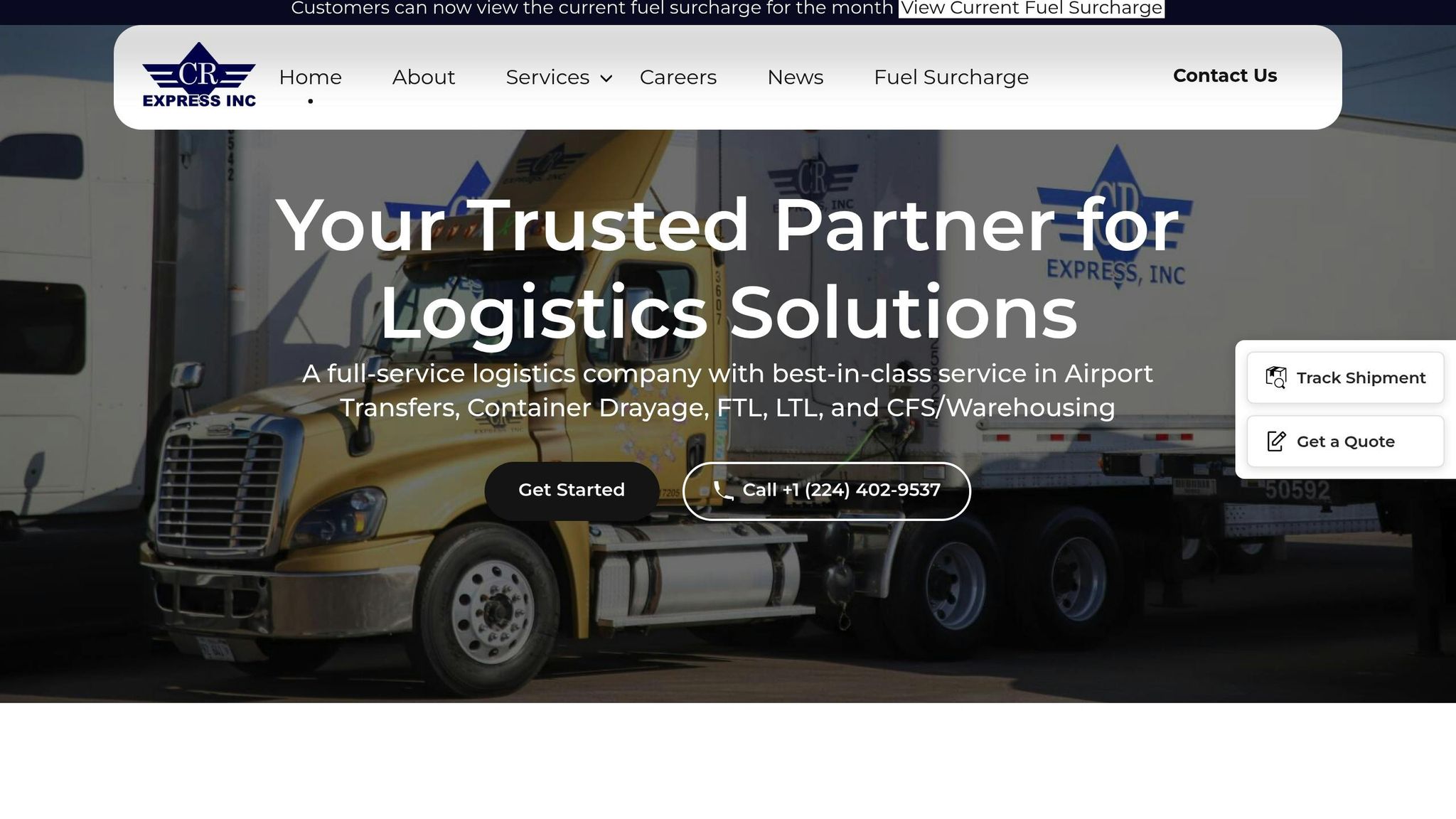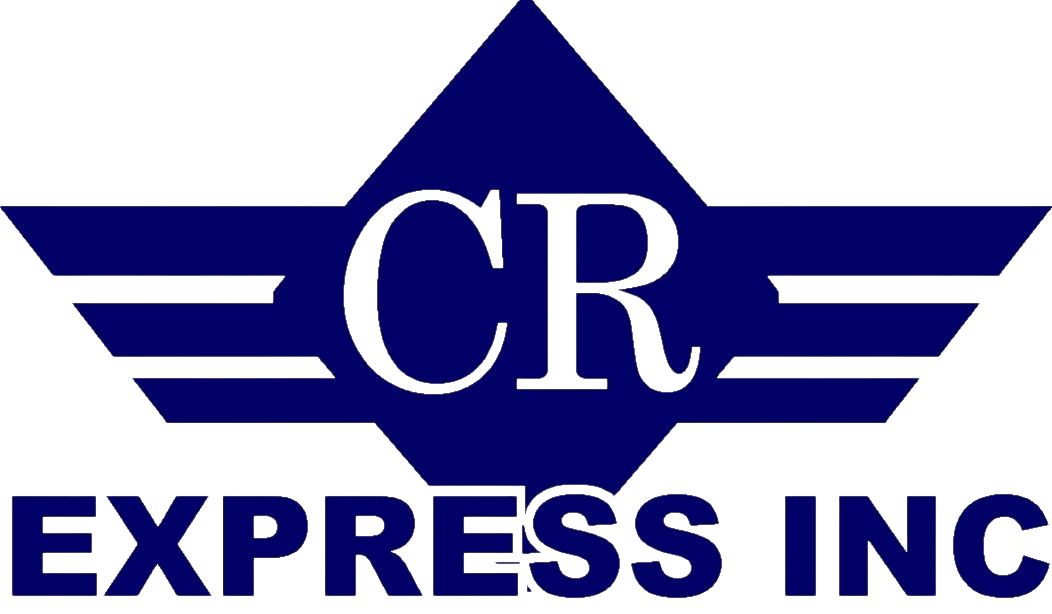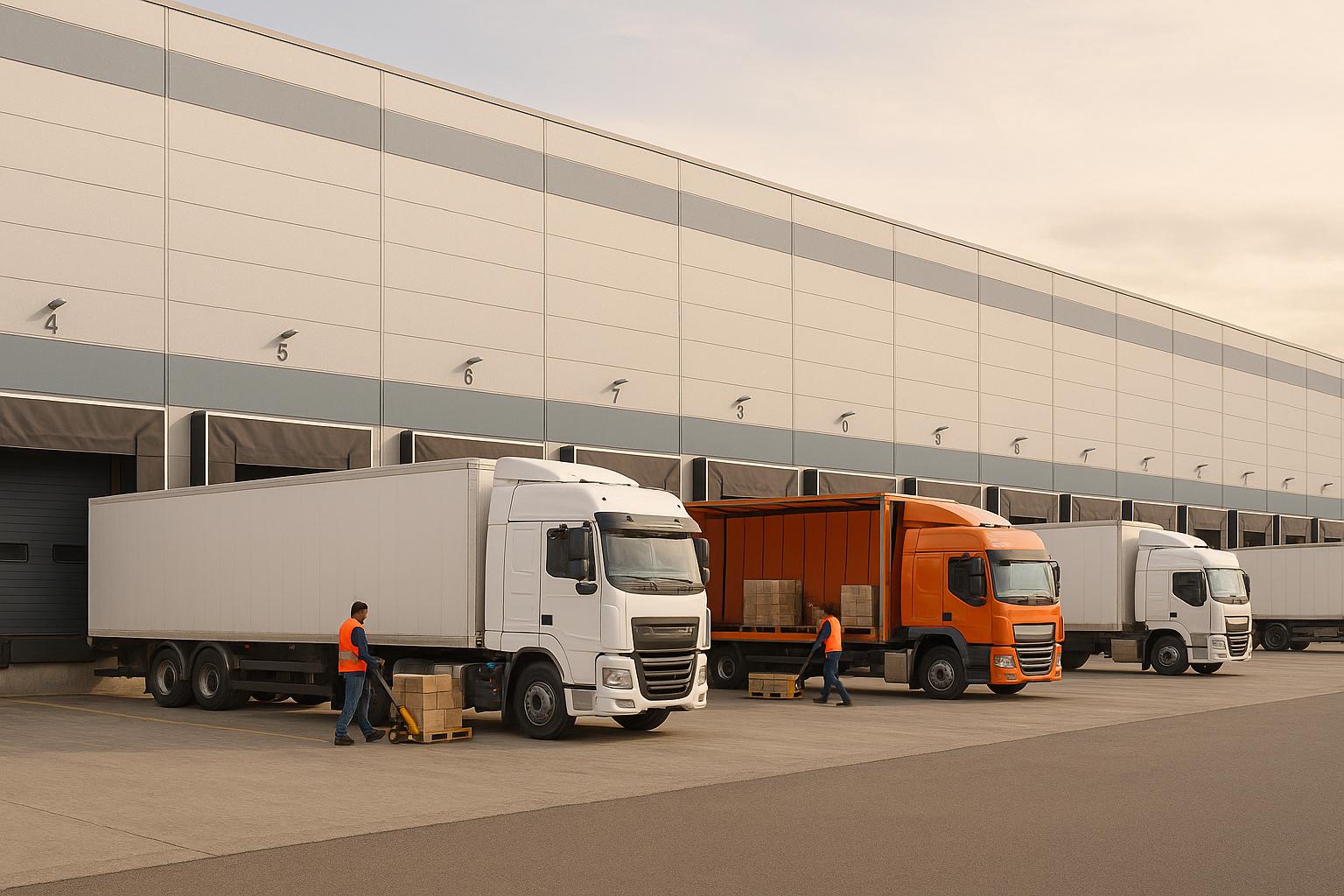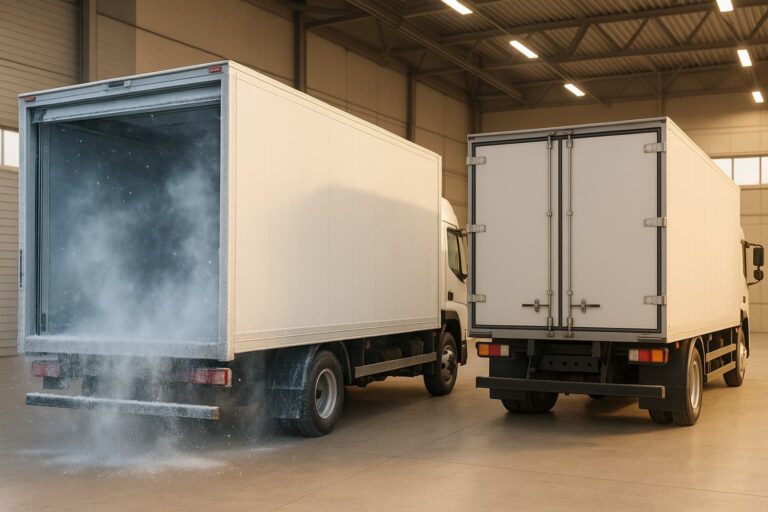Cross-docking is a logistics method where goods are transferred directly from incoming to outgoing transportation with minimal storage time. This approach aims to speed up delivery, reduce inventory costs, and improve efficiency by skipping the traditional warehousing phase. It’s particularly useful for perishable goods, high-demand products, and industries relying on just-in-time delivery.
Key Points:
- Process: Goods are unloaded, sorted, and reloaded onto outbound vehicles, often within hours.
- Best Uses: Works well for perishable items, high-volume goods, and industries like retail, e-commerce, and automotive.
- Benefits: Saves on storage costs, reduces handling damage, and shortens delivery times.
- Challenges: Requires precise coordination, advanced infrastructure, and can be costly to set up.
Cross-docking is ideal for businesses prioritizing speed and efficiency but may not suit those needing long-term storage or handling irregular shipments.
How Cross-Docking Works
Steps in the Cross-Docking Process
Cross-docking cuts down on storage time by moving goods directly from incoming to outgoing transportation. When goods arrive – whether by truck, rail, or other methods – they are unloaded at receiving docks using equipment like forklifts or conveyor systems. From there, the items are sorted based on their final destination, customer orders, or specific delivery routes. This sorting stage requires careful coordination to ensure that incoming shipments align perfectly with outgoing schedules. Once sorted, the goods are immediately loaded onto outbound vehicles, such as trucks or delivery vans. To avoid delays, it’s critical that inbound and outbound schedules are tightly synchronized.
Infrastructure and Technology Needs
The success of cross-docking relies heavily on having the right infrastructure and technology in place. Facilities are designed to support rapid movement of goods with minimal storage. Typically, receiving docks are located close to shipping docks to maintain a seamless flow. Features like multiple dock doors and open layouts are essential to accommodate various vehicle types and allow forklifts and other equipment to move freely.
Technology plays a key role in making cross-docking efficient. Tools like Warehouse Management Systems (WMS) provide real-time inventory tracking and help coordinate shipments. Barcode scanners, RFID systems, and automated conveyors ensure accurate sorting and quick transfers between docks. Scheduling software and GPS tracking further enhance operations by predicting shipment arrivals and assigning dock spaces efficiently. For facilities handling perishable goods, temperature-controlled areas are a must to maintain the cold chain and protect product quality. Together, these infrastructure and technology elements create a system that supports the fast-paced nature of cross-docking.
Best Products and Industries for Cross-Docking
The efficiency of cross-docking makes it ideal for products that need to move quickly through the supply chain. Perishable items, such as fresh produce and dairy, are prime candidates since reduced handling time minimizes spoilage and preserves quality. For instance, Walmart uses cross-docking extensively to transport fresh groceries directly from suppliers to its stores.
High-demand, high-volume products also benefit from this method. Supermarkets, for example, use cross-docking to maintain a steady supply of fresh goods from farms and factories. In the automotive industry, cross-docking supports Just-in-Time (JIT) manufacturing by ensuring that parts and components arrive exactly when needed, which helps reduce inventory costs.
E-commerce companies also rely on cross-docking to meet fast delivery expectations. By placing fulfillment centers near major markets, they can ensure quick order processing and shipping. Seasonal or promotional items, which often have limited sales windows, are another good fit for cross-docking because of the speed it offers.
Pharmaceutical companies frequently use cross-docking to expedite the delivery of medicines, especially temperature-sensitive products that require careful handling. Pre-packaged goods that don’t need further inspection can move directly from inbound to outbound transport, saving time and costs. Even bulky items benefit from cross-docking by avoiding the expenses tied to long-term warehousing.
Benefits of Cross-Docking
Main Advantages of Cross-Docking
Cross-docking offers several practical benefits that can streamline operations and cut costs. By removing the need for long-term storage, businesses can save on expenses like warehouse rent, utilities, and equipment maintenance. Instead of products sitting in storage, they move directly from inbound to outbound shipments, speeding up the delivery process. This faster turnaround is a game-changer in today’s world, where customers expect quick and reliable order fulfillment.
Another perk? Fewer touchpoints. With less handling, products are less likely to get damaged, ensuring they reach customers in top condition. Labor and equipment are also used more efficiently, translating into smoother operations and faster inventory turnover. This efficiency helps businesses stay flexible and adapt quickly to shifting market demands.
Examples of Cross-Docking Benefits
Many industries have seen tangible results from cross-docking, such as lower inventory costs, shorter lead times, and improved product flow. These advantages enable businesses to respond more effectively to customer needs and market fluctuations, keeping them competitive in a fast-paced environment.
Drawbacks and Challenges
Challenges and Risks
The success of cross-docking hinges on impeccable timing and coordination. Even minor scheduling hiccups can throw the entire process off track. To keep things running smoothly, suppliers, carriers, and teams must work together seamlessly. However, unexpected delays – like traffic jams or equipment malfunctions – can create bottlenecks, making it essential to have solid backup plans in place.
Another hurdle is the need for specialized infrastructure and technology, which can come with hefty upfront and ongoing costs. The fast-paced nature of cross-docking also leaves little room for thorough quality checks, increasing the chance that issues might slip through unnoticed. These factors can significantly impact the overall efficiency of cross-docking operations.
Industries and Products with Limited Use
Cross-docking isn’t a one-size-fits-all solution. Some industries and products are better suited to traditional warehousing. For example, items that require long-term storage benefit from the flexibility of conventional warehouses, especially for managing seasonal demand fluctuations. Similarly, products that need specialized handling or strict temperature controls might not work well within the fast-moving cross-docking model. Businesses dealing with low-volume or irregular shipments may also find traditional warehousing a more reliable and practical option for their needs.
sbb-itb-c0b8770
Cross-Docking Solutions at CR Express

CR Express Infrastructure and Services
CR Express operates a cutting-edge 280,000-square-foot facility designed to handle cross-docking with precision and speed. This space is equipped with secured loading docks capable of managing multiple inbound and outbound shipments at the same time – an essential feature for meeting the fast-paced demands of cross-docking operations.
The facility spans 10 acres and is safeguarded by full-coverage CCTV and motion-activated lighting, ensuring the security of high-value shipments during their short handling periods. For goods that require specific conditions, CR Express offers temperature-controlled handling, making it an ideal choice for perishable items and sensitive pharmaceuticals that must maintain their quality throughout the process.
As a certified container freight station (CFS) with TSA-approved transportation, CR Express also specializes in consolidating international shipments while staying compliant with all regulatory requirements. This infrastructure forms the backbone of its advanced cross-docking services.
Cross-Docking Applications
CR Express integrates cross-docking with bonded warehousing to streamline the movement of international shipments while ensuring customs compliance. This combination allows goods to move efficiently through the supply chain without unnecessary delays.
For industries dealing with hazardous materials, such as chemicals and pharmaceuticals, CR Express employs specialized certifications to minimize risks and reduce storage time. This ensures safe and efficient handling for even the most sensitive shipments.
Additionally, CR Express offers container drayage services, transporting containers directly from ports to its facilities. Once there, shipments are quickly sorted and dispatched, making this service particularly valuable for retailers and manufacturers that rely on just-in-time delivery models.
These seamless services highlight why CR Express is a trusted partner for cross-docking solutions.
Why Choose CR Express for Cross-Docking?
CR Express combines advanced infrastructure, specialized certifications, and industry expertise to deliver reliable cross-docking services. Founded by Carlos Rosales and Jamal Amro, the company has built a reputation for solving complex logistics challenges with ease.
Cross Docking – Supply Chain in 3 minutes
Conclusion
Cross-docking simplifies supply chains by skipping the need for interim storage. Instead, goods move directly from incoming shipments to outgoing transportation. However, pulling this off successfully requires precise coordination, advanced technology, and purpose-built infrastructure.
The benefits are clear: reduced storage costs, quicker deliveries, and better inventory turnover. Companies handling perishable products, high-volume retail items, or operating in just-in-time manufacturing often gain the most. That said, cross-docking isn’t without its challenges – it demands sophisticated planning systems, dependable supplier networks, and facilities designed for rapid movement of goods.
This approach works best for high-volume, time-sensitive operations. On the other hand, businesses with seasonal or irregular shipping patterns may not see the same advantages.
Take CR Express as an example. Their 280,000-square-foot facility demonstrates how to tackle cross-docking challenges effectively. With secured docks, temperature-controlled options, bonded warehousing, and container drayage, they provide fast and compliant logistics solutions.
For U.S.-based companies, deciding whether cross-docking is the right fit comes down to aligning your operational needs with a capable logistics partner. With the right strategy and a skilled partner, cross-docking can give businesses a competitive edge in today’s fast-moving markets.
FAQs
How does cross-docking make supply chains more efficient than traditional warehousing?
Cross-docking enhances supply chain operations by simplifying how goods are moved. Instead of sitting in a warehouse, products go straight from incoming shipments to outgoing transport. This approach helps cut down on storage expenses, reduces handling time, and gets deliveries out the door faster.
By skipping the need for extended warehousing, businesses can adapt more quickly to customer demands while keeping operational costs in check. That said, cross-docking requires careful coordination to ensure everything runs smoothly and tends to work best for industries dealing with fast-selling products or items with a short shelf life.
What technologies and infrastructure are needed for a successful cross-docking operation?
A thriving cross-docking operation hinges on the right mix of cutting-edge technology and well-planned infrastructure. On the tech side, tools like warehouse management systems (WMS) are essential for keeping operations organized, while RFID and barcode scanners enable real-time tracking of goods. Automated processing systems further streamline handling, saving time and reducing errors. More recently, IoT devices and automation tools have been making waves, boosting both efficiency and accuracy.
When it comes to infrastructure, the setup must include high-capacity loading docks, a layout designed to keep materials moving smoothly, and dependable communication systems to coordinate arrivals and departures with precision. Together, these components cut down on storage needs, prevent delays, and keep operations running at peak efficiency.
Are there certain industries or products that cross-docking doesn’t work well for, and why?
Cross-docking might not work well for industries dealing with products that have unpredictable demand, like fashion or luxury items. This is because cross-docking thrives on precise coordination and consistent demand. Without those elements, the process can become inefficient.
It’s also a tricky fit for businesses managing fragile, high-value, or highly customized products. The quick transfer process involved in cross-docking can increase the chances of damage or mistakes, making it less ideal for these kinds of goods.





